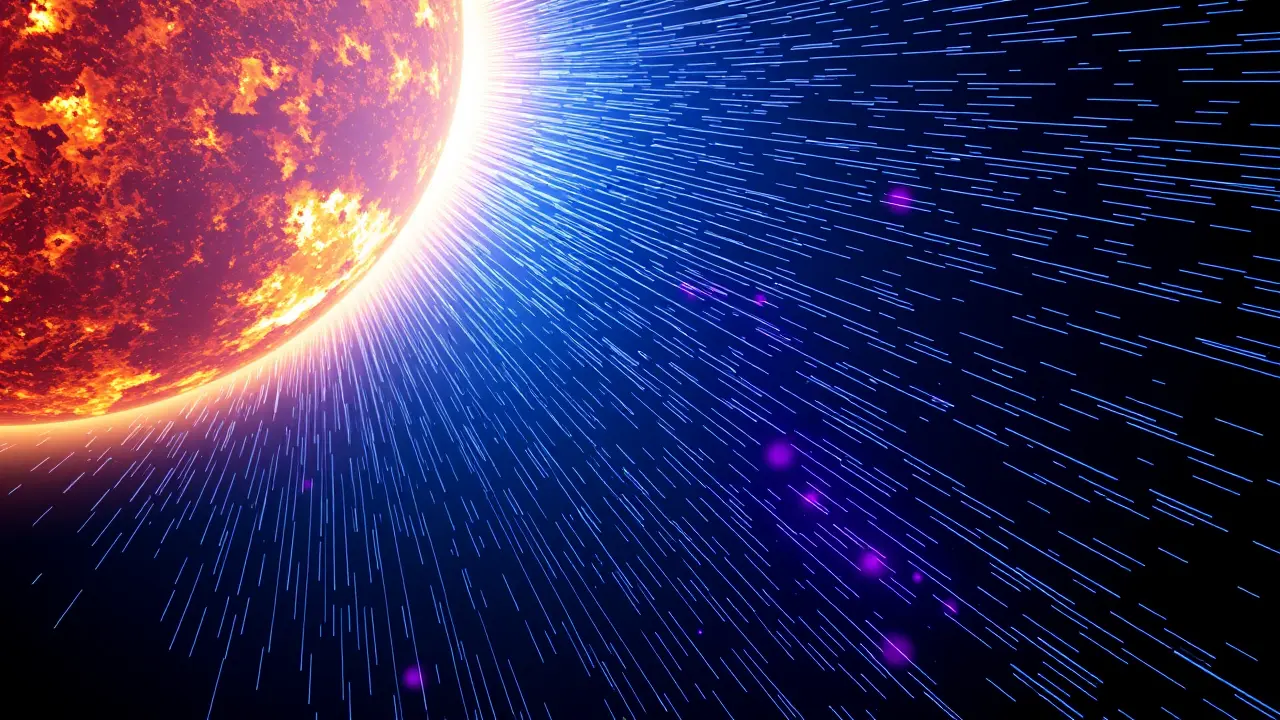It actually rains on the Sun. Here’s the stunning reason
In a discovery that feels like it was pulled from the pages of a cosmic thriller, scientists at the University of Hawaiʻi have cracked one of the Sun’s most perplexing mysteries: the phenomenon of solar rain. Imagine, if you will, a star so ferociously hot it defies comprehension, yet within its tumultuous atmosphere, cascades of cooling plasma—glowing, superheated gas—fall back onto its surface in a breathtaking downpour.This isn't science fiction; it's a fundamental rewrite of our stellar playbook, forced into being by a team that dared to model the Sun's behavior with a new level of sophistication, focusing on time-varying elements like iron. For decades, our understanding of the Sun's outer layers, the corona and chromosphere, was built on relatively static assumptions.We saw solar flares as titanic, one-off explosions, the solar system's most powerful tantrums, but the subsequent rain was a puzzle. How could this million-degree corona spawn these relatively cool, dense plasma showers that loop and fall in magnificent arcs? The answer, it turns out, lies in the dynamic choreography of elemental behavior during a flare's rapid evolution.By creating a model that accounts for how elements like iron ionize and recombine in real-time during these violent events, the researchers saw the rapid formation of condensations—the seeds of the rain—in a way previous, simpler models could never capture. It’s the difference between a blurry snapshot and a high-frame-rate video of a waterfall's first drop.This upends the long-held, almost placid view of coronal heating and cooling, revealing a far more volatile and rapidly cycling system. The implications ripple far beyond academic curiosity.This is the key that could unlock vastly improved predictions of space weather. Those beautiful auroras we admire are the gentle side of solar storms; their violent siblings can cripple satellites, disrupt GPS, and knock out power grids on Earth.Understanding the mechanics of solar rain gives us a deeper insight into the energy transfer and mass movement in the corona, essentially allowing us to better forecast the Sun’s mood swings. Think of it as moving from predicting a hurricane's general path to modeling the formation of individual, destructive tornadoes within it.This breakthrough is akin to the moment we first understood tectonic plate movement—it doesn't just add a new fact, it reconfigures the entire landscape of a field. It forces astrophysicists back to their drawing boards, textbooks in hand, ready to edit chapters on stellar atmospheres. The Sun, our nearest star, has been holding out on us, keeping a secret weather system hidden in plain sight, and its revelation is a stunning testament to the power of asking better questions and building better models to peer into the heart of a cosmic furnace.
Latest News
The charts are whispering what the true believers have felt in their bones for weeks—Dogecoin is carving out a bottom.
17 hours ago5 comments
The Institute for Fiscal Studies has thrown a stark warning onto Rachel Reeves's desk, urging the Chancellor to confront a potential £22 billion shortfall in
17 hours ago3 comments
Alright, let's break down this absolute heater of a performance from the Chicago Blackhawks, because if you missed this one, you missed a party.
18 hours ago5 comments
The ice was hot last night in the NHL, folks, serving up a slate of games that felt less like a regular season Tuesday and more like a playoff preview with a
18 hours ago3 comments
The XRP chart is painting a tantalizing picture for those with the stomach to withstand the relentless pressure from crypto's leviathans.
18 hours ago4 comments
It’s in the small shifts, the quiet recalibrations of a Thursday morning, where the most meaningful change often takes root.
18 hours ago4 comments
In a move that sent ripples of quiet confidence through the crypto ecosystem, blockchain intelligence firms tracked a monumental treasury allocation from
18 hours ago4 comments
In a move that would have drawn a nod of approval from historical figures like Churchill, who understood the delicate balance of power within democratic
18 hours ago2 comments
LI
Liam Carter123k1 day ago
ok but why does this feel like a metaphor for my entire life rn also i should probably go to sleep
0
JA
Jamie Wilson123k1 day ago
this is honestly so cool to read about, makes me wanna learn more about space stuff tbh
0
JA
Jamie Larson123k1 day ago
wait so the sun just has its own weather system now that's wild and also kinda rude of it to keep this a secret for so long
0
JA
Jamie Larson123k1 day ago
wait what this is actually so cool tbh, amazing what we can figure out when we just keep looking up
0
KY
Kyle Peterson123k1 day ago
this is cool and all but i'm always skeptical of these 'fundamental rewrite' claims tbh feels like every other week a new study completely overturns everything we know smh
0
JA
Jamie Wilson123k1 day ago
wait so the sun has weather now like rain and stuff? idk if i get it but it sounds kinda cool tbh
0
